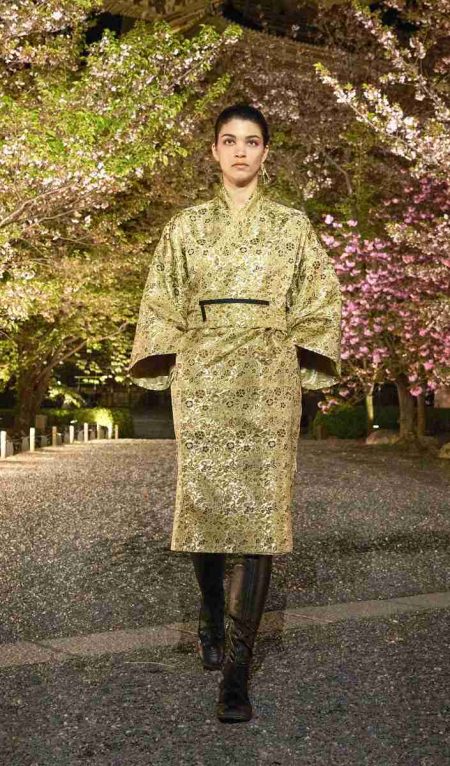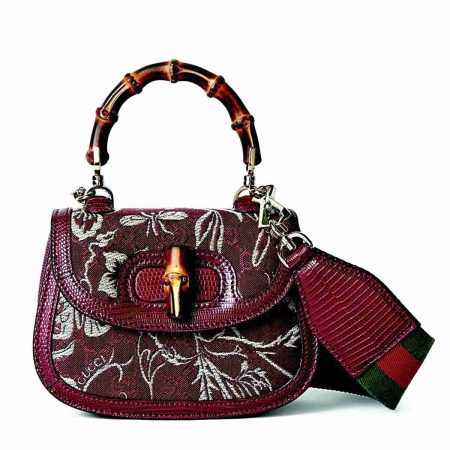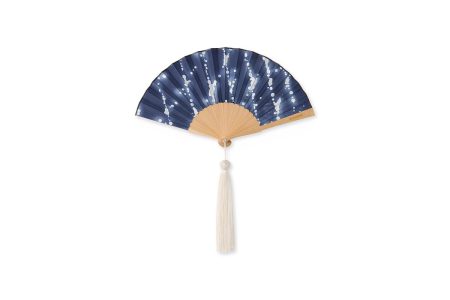
Courtesy of Dior
This item unveiled in Christian Dior’s autumn 2025 collection uses a textile produced by Tatsumura Textile Co.
8:00 JST, November 10, 2025
Kyoto’s Nishijin-ori textiles, long cherished as a material for kimono and obi sashes, is attracting attention from high-end overseas fashion brands. The potential of the textile is being expanded through use in clothing, bags and interior decoration.
A dress featuring a vivid, intricate floral pattern. A coat with a lustrous pattern that appears to stand out from the surface. These items were among the new pieces unveiled at French fashion house Dior’s show in Kyoto in April. For the show, Dior used textiles produced by Tatsumura Textile Co., a Nishijin-ori weaving company founded in 1894.
Tatsumura Textile’s connection with Dior is not new. It dates to the 1954-55 autumn/winter haute couture collection, in which the brand’s founder, Christian Dior, used textiles by the company.

Courtesy of Gucci
A bag created in collaboration between Gucci and Hosoo Co.
For the recent Kyoto show, two of those textiles were recreated with a modern interpretation. The three-year production process included adjusting and toning down their colors and luster.
“I’ve been deeply moved to see our textiles transformed into clothes through the vision and craftsmanship of a top-tier designer,” said Tatsumura Textile President Iku Tatsumura, 52. “They viewed and valued Japanese design with fresh eyes.”
For the past three years, Italian fashion brand Gucci has sold limited-edition bags created in collaboration with Hosoo Co., another Nishijin-ori weaving company founded in 1688.
Hosoo has traditionally used looms designed to produce textiles about 32 centimeter wide for obi sashes for kimono. This width is unsuitable for larger products. In 2010, the company developed a loom to meet the global standard width of 150 centimeters.

Courtesy of Bulgari Hotel Tokyo
Textiles produced by Hosoo Co. are used for interior decor, such as wall fabric, in the guest rooms of Bulgari Hotel Tokyo.
The company developed its current reputation by collaborating with world-renowned architect Peter Marino on the interior design of global Dior stores, which led the Kyoto company to expand its business. The company’s textiles are now gaining attention for use as part of wallcoverings and sofas in high-end designer stores and foreign-affiliated hotels.
“The value of craftsmanship is steadily increasing amid a growing emphasis on sustainability,” said Hosoo President Masataka Hosoo, 47. “Using Nishijin-ori textiles, we want to create and provide new things to the world.”
In 2023, the company also formed a partnership with LVMH Metiers d’Art, a company supporting the preservation and development of traditional techniques.
A boost from global patrons

The Yomiuri Shimbun
An artisan works at a loom with colorful threads at Tatsumura Textile Co.’s workshop in Kyoto in July.
The Nishijin-ori market is in decline.
According to the Nishijin Textile Industry Association in Kyoto, domestic shipments peaked at about ¥279 billion in 1990 and subsequently fell to about ¥17 billion in 2023. The number of association member companies has also decreased from 1,160 to 280.
Nishijin-ori textiles are produced using a division of labor system.
“Collaborating with overseas brands also helps protect the artisans,” Hosoo said.
“The world is taking notice of the centuries-old history and rare, time- and labor-intensive techniques of Japanese crafts,” fashion historian Kaori Nakano said. “To protect the production areas with these techniques, it will be crucial to build equal partnerships with overseas brands.”
Other collaborations

Courtesy of Jil Sander
A folding fan by Jil Sander
Italian luxury fashion house Jil Sander is selling a limited collection created in collaboration with four traditional craft workshops in Kyoto.
One of the items in the collection is the “Orin Charm” (prices starting from ¥35,200), which is a collaboration with Nanjo Kobo, a workshop with over 200 years of history crafting orin standing bells for Buddhist altars. The product also features a kumihimo braid.
The collection also includes fabric folding fans (prices starting from ¥36,300) produced with Miyawaki Baisenan, a Kyo-sensu folding fan maker founded in 1823. The fans use Jil Sander’s textiles.
The fashion brand says that it sympathizes with Kyoto workshops’ commitment to maximizing the skills passed down through generations and their inquisitive approach to craftsmanship that makes full use of the environment and materials.


AloJapan.com